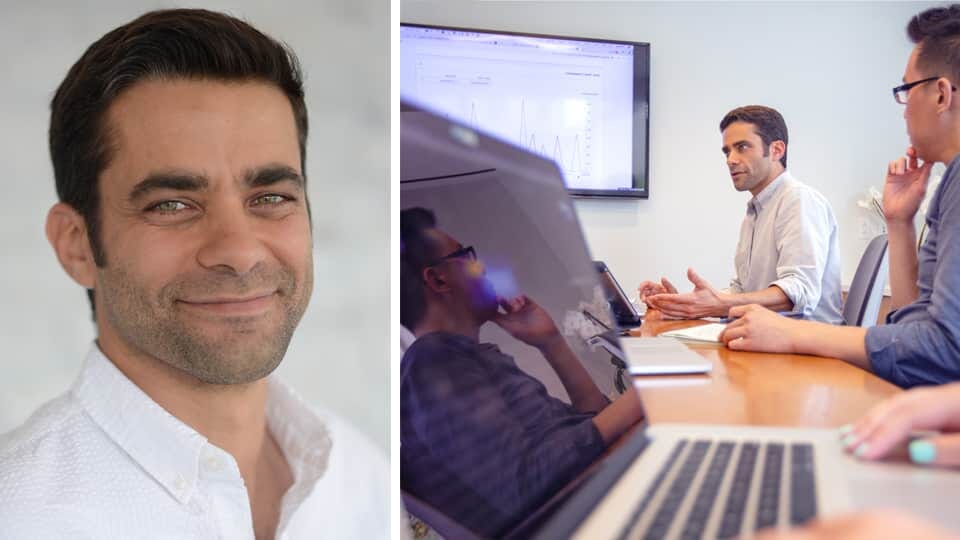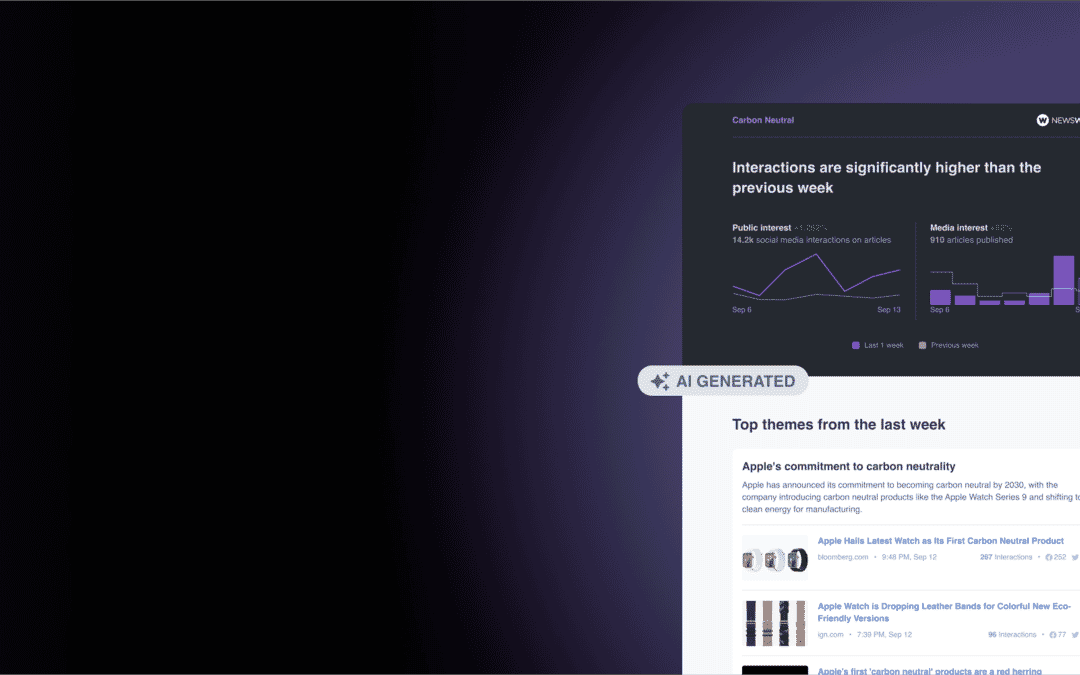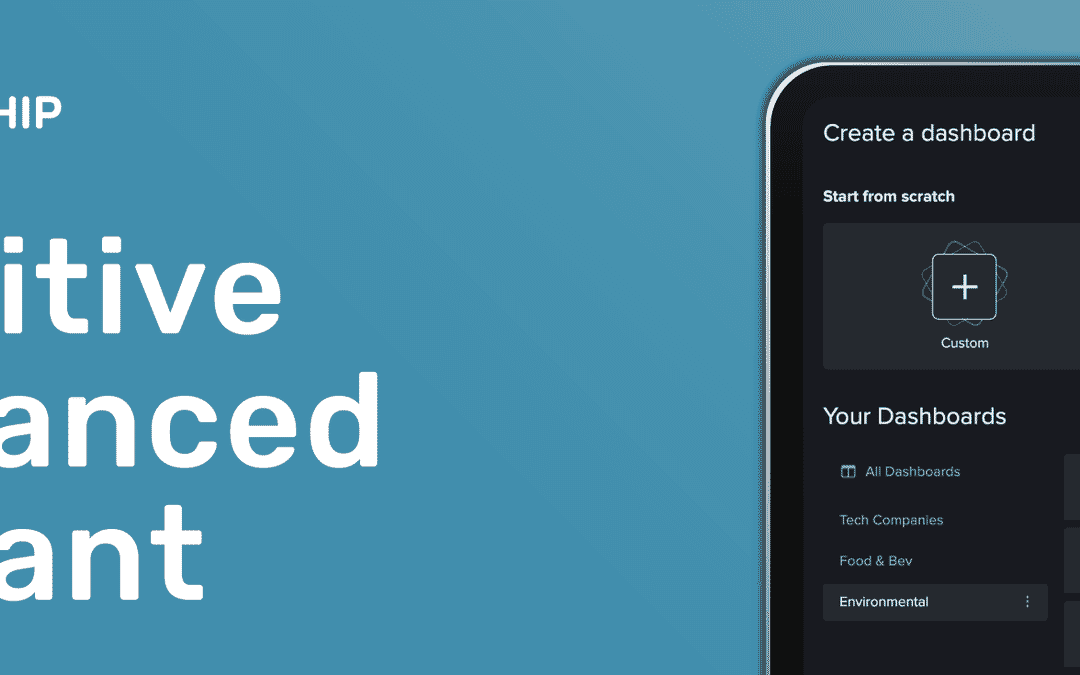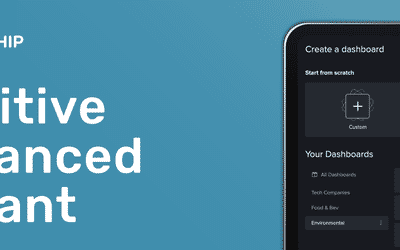We spoke to Steve Salvador, Creative Director and Head of Brand Programming at APCO Worldwide about the role of data in video storytelling campaigns.
—
APCO works with clients across the world in creative and PR capacities. At their global headquarters in Washington D.C, Steve leads a team specializing in video and brand programming.
APCO uses data to manage client campaigns. Their model for running and assisting in video storytelling campaigns explores a new area, which they define as “sustained brand building through sustained content.” Borrowing from his past, Salvador and his team utilize the tools and tactics of journalists and media organizations, but apply them to brand storytelling. Using a story intelligence model they call “Storybeats,” they design and implement proactive video content for their clients: proactive ideas for brand stories and, further down the line, a programming strategy for broadcast across social channels, including episodic video, that is guided by a brand’s overall strategy.
“
It’s really helping us to maximize relevance, to understand what stories and trends are driving engagement.”
Once the core themes and target audiences are nailed down, data informs detailed decision-making. NewsWhip and its access to trends helps in the generation of new ideas and new story angles. Analytics comes into play for APCO’s proactive content to study long-term trends. “It’s really helping us to maximize relevance, to understand what stories and trends are driving engagement.” When it comes down to it, there are three ways APCO uses NewsWhip to make sense of data:
Trend correlation
How does that guide decision-making? Often Salvador’s team is trying to understand a macro theme for a client and determining if that is a theme the brand can credibly speak to. Their client Suntory, for example, is focused on quality and craftsmanship: “If we see a theme that’s generating a lot of interest, there could be a macro theme at play, but there are often micro themes driving a lot of that engagement.”
Understanding the correlation of those two themes together in Analytics gave Salvador’s team the confidence to narrow a story’s focus for increased relevance: “it’s not just about something that we think is interesting or appealing, it’s about understanding what matters most to the audience we’re trying to reach and how we connect the dots.”
Geo-relevance
While there is a lot of talk in the industry about geo-targeting, geo-relevance is also applicable. Working with a global client like Suntory, sometimes dominant themes emerge that work in the US, but those might not be the same themes that drive engagement in other parts of the world. “We experienced that recently with a couple of markets in southeast Asia that Suntory was focusing on. We were trying to understand the sustainability picture and what aspects of their sustainability story were important to audiences in those markets. We were really intrigued by what we found.” There were certain aspects of sustainability related to plastic packaging, for instance, that surpassed interest in other aspects related to product marketing, and the data pointed them to other themes that might have a localized impact.

Testing assumptions
Sometimes Salvador’s team has certain ideas they assume would work really well for a video series but lack the data to prove it. With NewsWhip, they gain the ability to navigate the creative process with a data-driven roadmap. Being able to go back and find the right search terms with the help of the NewsWhip Customer Success team to see if there is a connection has led APCO to refine their ideas. “I think there’s great strength in the data in that respect.” Additionally, queries are limitless, allowing them the flexibility to test as many assumptions as they want.

In terms of how APCO has been using NewsWhip data so far for Suntory, they’ve been especially interested in looking at the past, in order to proactively plan future programming.
“One of my favorite things we’re doing is looking at themes each month related to the core strategy and then being able to leverage historical data and go all the way back to test assumptions. It’s helping us to uncover new story angles and providing us with defensible data for editorial decisions.”
“
One of my favorite things we’re doing is looking at themes each month related to the core strategy and then being able to leverage historical data and go all the way back to test assumptions.”
For proactive content, Salvador’s team tends to plan quarterly in both short and long form, and successful programming isn’t just defined by engagement: “I don’t think an audience is going to react in many ways if there’s not something about the piece or the content that motivates them to do so.” While engagement is really important to measure appetite and motivation, from an intention standpoint, Salvador believes there’s too much focus on the audience’s “declining attention span.”
“I do think that it would behove us to not be too obsessed with this perceived lack of attention. Certain channels are better suited to different types of video content, but I do think that if you can generate engagement by delivering content an audience cares about, that same audience can have an appetite on the right channel, at the right time, to watch something a little bit more in-depth.”
“
Certain channels are better suited to different types of video content, but I do think that if you can generate engagement by delivering content an audience cares about, that same audience can have an appetite on the right channel, at the right time, to watch something a little bit more in-depth.”
For them, comments and shares matter most. “People who take the time to comment and share it with their network, regardless of the motivation and what that means…that’s giving. You’re not going to share unless there’s some type of value derived from what you watched.”
What Salvador finds so exciting about the space he operates in is that, while there are more clients building newsrooms in house, brands can’t always operate in a way that is conducive to capitalizing on a real-time opportunity, which makes for a great creative challenge. “You have to be mindful of those things because they do have a brand they need to protect. Our role, especially for reactive storylines and opportunities, is to first build the case.”
As far as what’s next for Salvador’s team? Right now they’re focused on their proactive content and want to utilize prediction more. “I think the risk appetite is changing. When we introduce clients to this model, there’s more emphasis on proactive programming, but as we begin to publish stories that deliver results and build trust, that’s where the real-time stuff comes into play.”
If you want 5+ years of historical engagement data and crisis monitoring for your clients, request a free demo of NewsWhip now.











